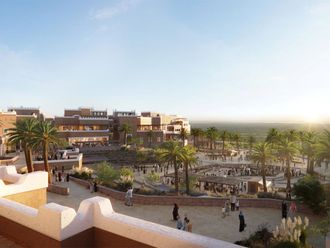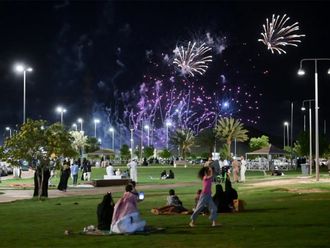Abu Dhabi: Four and five star hotels in Dubai saw a 5.5 per cent drop in average room rates (ARR), which reached $380 in March while Abu Dhabi recorded a 6.5 per cent increase in ARR to reach $167, according to the latest data from HotStats.
The report released on Thursday showed that occupancy levels in Dubai remained stable in March at 88.8 per cent, but the slide in ARR had an impact on revenue per available room, which fell by 4.8 per cent to $338.
Conversely, hotels in Abu Dhabi capitalised on strong demand, with hotels recording an average occupancy rate of 83.9 per cent — an increase of 1.3 per cent on the same period last year.
Growing rates boosted revenues per room and offset a drop in food and beverage revenues.
Filippo Sona, head of hotels in Middle East and Africa at Colliers International, a commercial real estate company, attributed falling rates in Dubai to increased new supply coming into the market.
“The new supply of very large hotels particularly in the stretch of Shaikh Zayed Road offer promotional rates to target the MICE business, and thus, take business away from other locations. Therefore, hotels have to lower their rates in order to compete with these offers,” he told Gulf News.
Sona added that he expected single-digit growth in 2015 as opposed to the double-digit growth in the past few years, attributing performance this year to a combination of lower oil prices, rising supply, and slowing Russian economy.
Russia is one of Dubai’s largest source markets.
“We will see double-digit growth sometime next year when we start seeing Dubai Parks, which is the theme park in Jebel Ali, because that will bring in demand,” he said.
Looking at Abu Dhabi, analysts attributed increasing rates to stronger demand levels.
Christopher Hewett, senior consultant at TRI Hospitality Consulting, said that high occupancy rates in the emirate were pushing rates up, along with market corrections.
“We see that there’s a slight imbalance towards stronger demand rather than supply, and we see that probably continuing for the next six to 12 months,” he said.
Hewett said the outlook was bullish in the UAE, though there were some challenges in the industry particularly as Sharm Al Shaikh continues to attract more tourists.
Meanwhile, across the UAE’s borders, the Middle East and North Africa region reported positive year-on-year results during March in occupancy levels, which reached an average of 68.7 per cent. Revenues per room also went up 0.7 per cent to $118, according to data compiled by STR Global.
Average rates, however, dropped 2.3 per cent to $172.
Egypt experienced the highest increases in average rates (32.9 per cent to $87), while Lebanon saw highest occupancy (up 27 per cent to 48.5 per cent).












